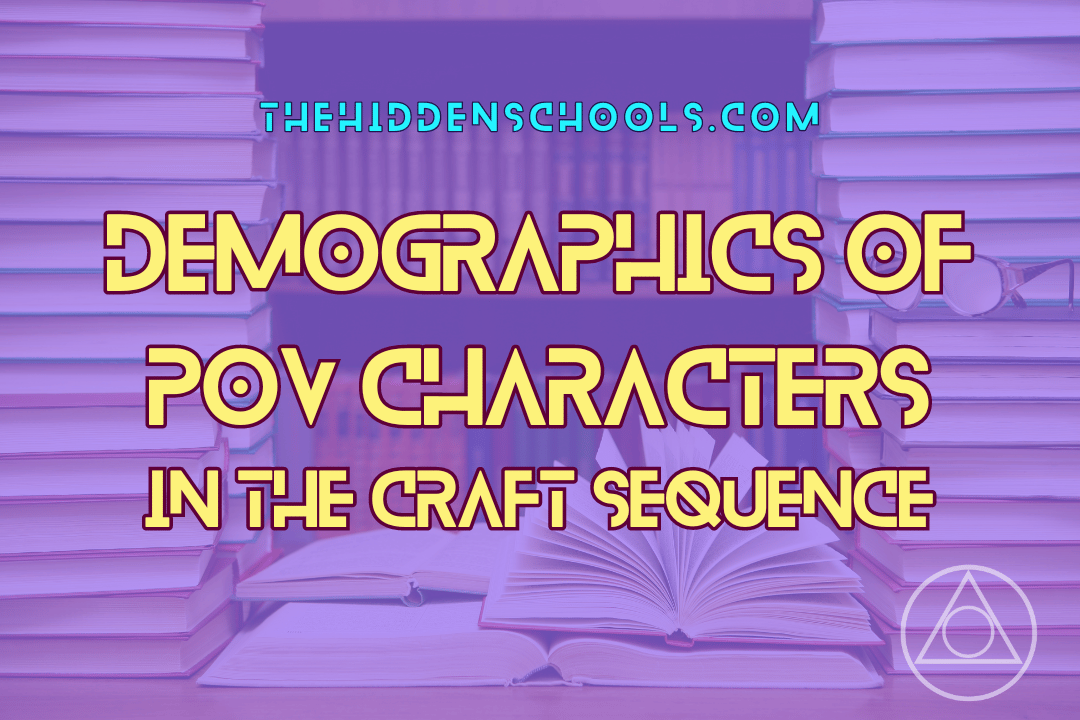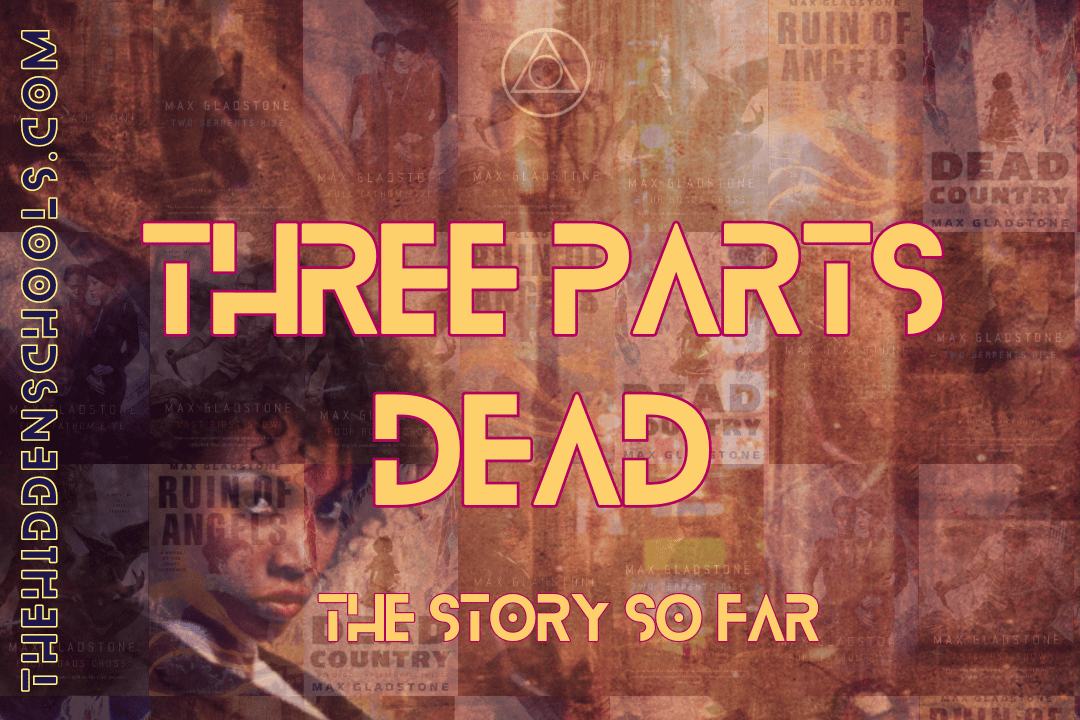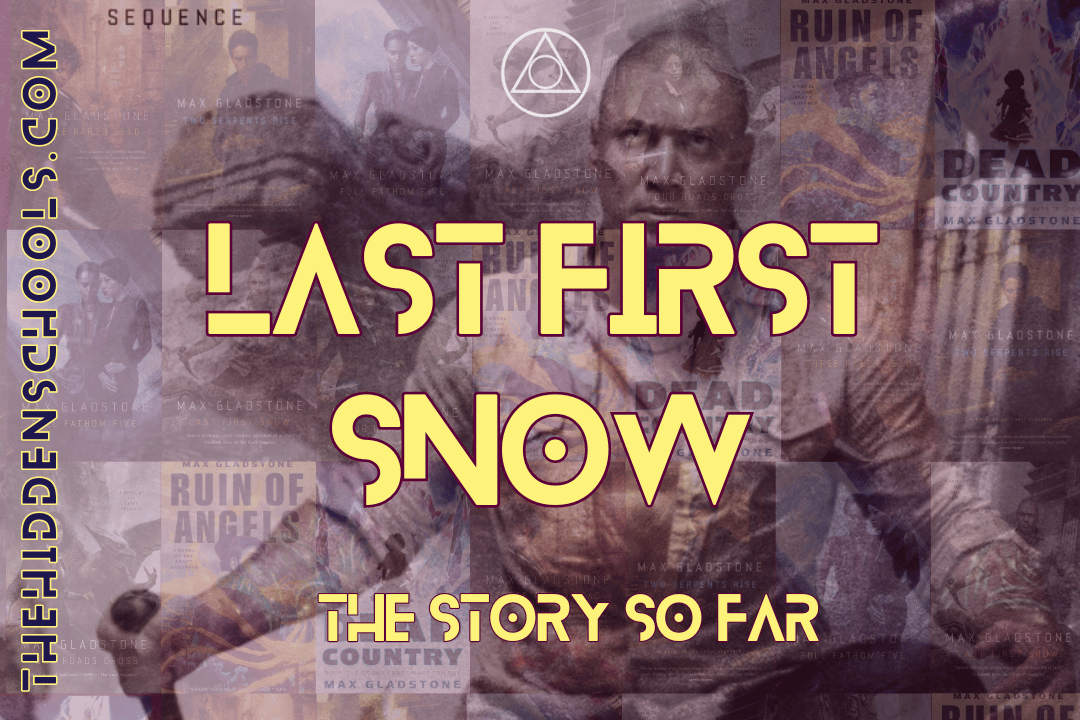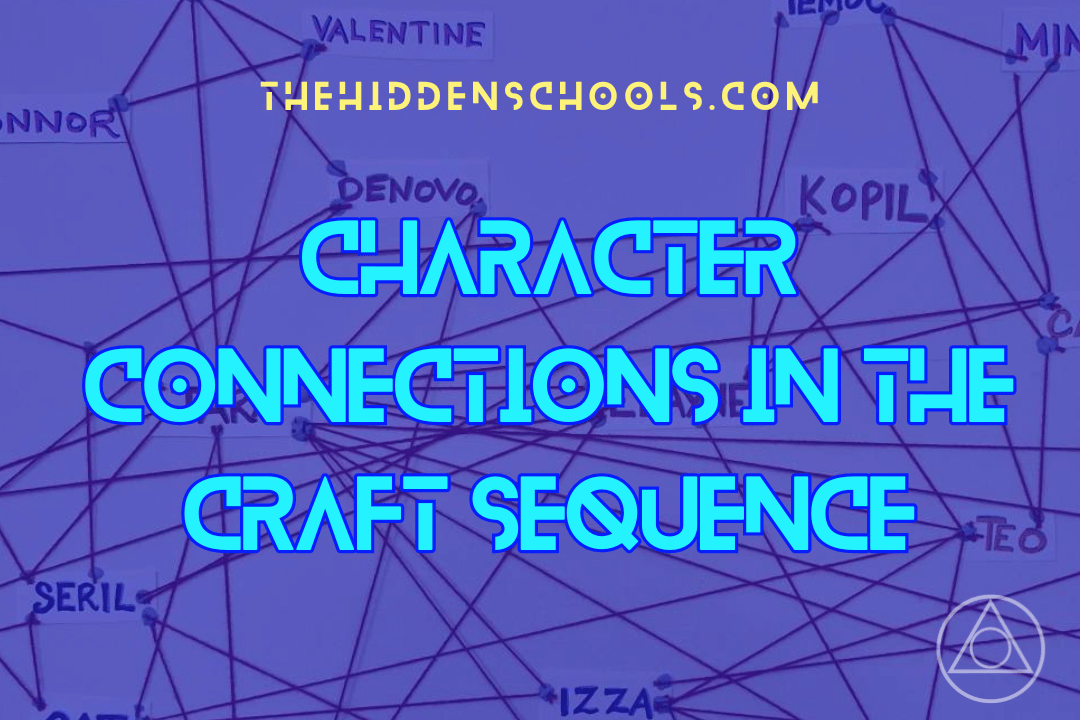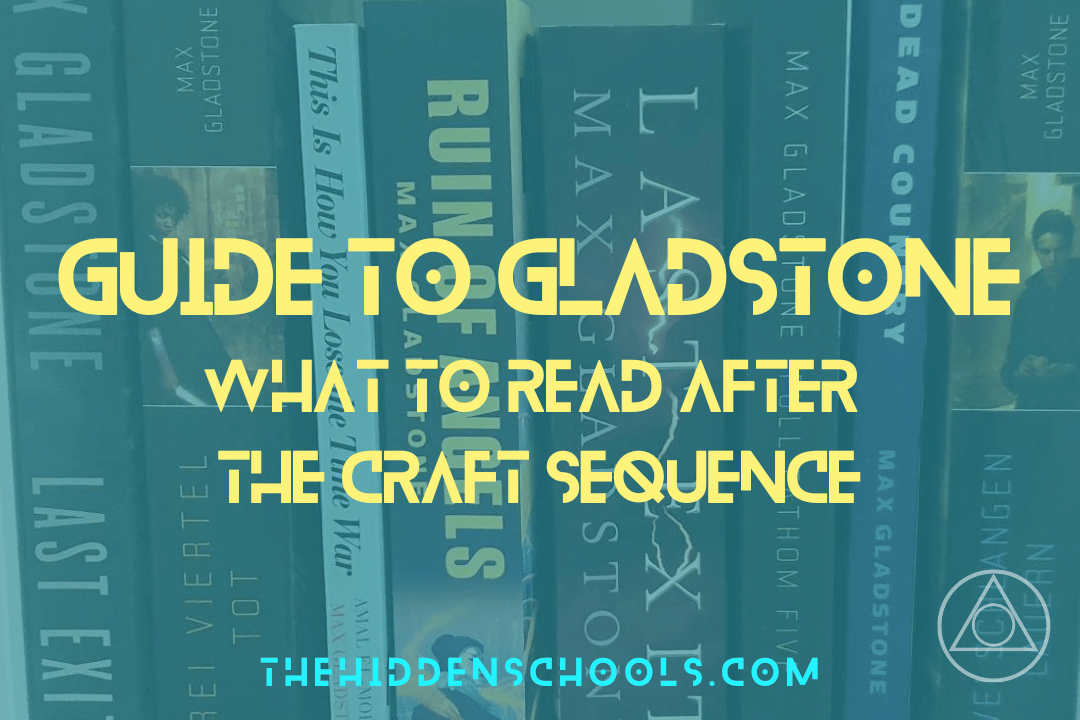Who - or WHAT - is Dawn?
Dawn is possibly the most important new character we meet in Dead Country - yet we learn perishingly little about her. In a story deeply entwined with family, heritage and making peace with your past, Dawn stands apart - history-less, family-less, almost nameless.
Who exactly is Dawn? And is ‘who’ even the right question?
Major spoilers for Dead Country. Written before I read Wicked Problems, though edited after, so prepare for wild speculation that will probably be jossed the moment I open my ARC.
What do we know about Dawn?
“The Raider was dragging a girl by her hair from the barn - a young woman, seventeen or so and blond in a homespun dress, twisting against his grip.
The girl’s eyes were wide and staring and cornflower blue.”
Dawn is a pale, blonde girl - or young woman - who grew up with an unnamed father wandering the Badlands. Her father died a few years ago, and she remained on the farm where they had most recently been working at Blake’s Rest. The family there seem, by Dawn’s reactions to talking about them and later seeing one of them, cruel to her. She is immensely, unusually powerful in the Craft but has no training to speak of.
“Tara pressed her Craft into the wound. Dawn’s eyes snapped open, and they were full of silver-blue flame. That, Tara thought, was not supposed to happen.
Then Dawn screamed through the handkerchief, and the world went wrong.
Darkness slammed out from her with the force of a crashing wave. The sun vanished and Tara coud not feel the world underfoot.”
That being said, her destructive loss of control appears to be a recent development. Every other Craftsperson we hear of discovered their talent - and caused the standard level of destruction - in early childhood.
We know nothing of her father other than his existence and death. We know less about her mother. Dawn has no known surname. Visually she stands out in Edgemont, white-skinned and fair-haired compared to darker local inhabitants. Even her age is uncertain - Tara guesses 17 when they first meet but later says she was 2 years younger than Dawn when she reached the Hidden Schools, which would make Dawn early 20s give or take. There are timeline issues for Tara that I must delve into in a future article, but for now we have a vague age range of let’s say 16-22.
That’s it. This brief sketch is all we know of Dawn before Tara stumbled across her among the smoking ruins of Blake’s Rest.
This more than anything makes me deeply suspicious of Dawn. Put simply, this isn't how Gladstone writes. It’s not how he creates and depicts characters. Quite the opposite.
How Gladstone writes characters
Gladstone is typically a chunky writer. His prose is beautiful, but not sparse. His ideas are deep, and explored as such. Characters with a single line of dialogue carry the weight of their history; tertiary characters get more fleshed out histories and motivations than the protagonists of many books; the most central characters are so fully rendered they could all but walk off the page.
Yet Dawn is barely a silhouette.
Let’s compare her to a character who plays a similar role in an early book: Mal Kekapania. She too is - deliberately - an enigma, who shares little of her past with the book’s POV character. He knows her by a nickname throughout most of the book, and learns her surname by chance. Mal plays a nuclear role at the end of Two Serpents Rise. We hear nothing from her own mind until the very end of the book, and experience her purely through Caleb and his extremely biased lens.
Yet, compared to Dawn, we learn so much about Mal. We hear about her family, and how her parents died. We find out her moral philosophy, and how its dictated the course of her life and her choices. Even if Caleb can’t see through his haze of lust, the reader can see who Malina Kekapania is, see the shape of her life, and why she is the way she is.
For Dawn, all we have is a first name, too much power, pent up rage, and a distaste for ordinary people. This could be a rational response to her early life (see also: almost every Craftsperson who fought in the God Wars, and many of those who came later) but we don’t know those experiences. We don’t actually know what happened to shape Dawn.
Dawn is a blank slate of a proto-Craftswoman. She’s Tara, she’s Elayne, she’s Daphne, she’s Mal, she’s Kopil - but without any of their context and history.
For example, in Two Serpents Rise - which I’ve said many times before is my least favourite Craft Sequence book, and which I think is narratively flawed - we meet Kopil as a terrifying, bombastic, crowned skeleton with unspeakable power. Then, midway through the book - without any of his own POV - we get a deeply humanising (for lack of a better word) moment when he shares with Caleb that his lover Timas had been sacrificed priests on the very altar Kopil now uses for a desk. In a handful of lines, we suddenly have a deep, personal understanding of who Kopiul is, why he fought in the God Wars, how he became the version of himself we meet in the books.
Dawn? Crickets.
Moving away from the Craft Sequence, in Gladstone’s Last Exit we briefly have a POV character called Sean. In his handful of scenes he becomes such a fully formed and emotionally resonant that 2 years after I last read the book I can recall his name, his story, and the emotions it evoked in me.
Yet, Dawn remains embryonic. A blank slate.
Family, heritage, and names in Dead Country
Thematically, Dawn’s lack of history also makes little sense.
Family is at the heart of Dead Country. Not only is Tara reunited with her mother at her father’s funeral, but she reckons with her heritage through her parents and her upbringing in Edgemont. Connor, her love interest, has a complicated relationship with his own father Grafton, who is himself central to many conflicts with Tara and Tara’s decision making.
A key part of the plot involves Tara learning the land of Edgemont so she can define and defend it, which is essential to Craft. In doing so, she works with every family and learns their family history inside and out, from the publicly told stories to the deeply secret. She comes to know the land and its people better than she knows herself.
“Does it hurt your work if the story’s wrong?”
“It might,” Tara admitted.
When they were out of earshot, Esther turned her back to their audience. “Between us,” she said, “Shep Braxton’s ma was born in Regis, but her family was from the Shining Empire. They were in debt to criminals out there. The man they owed chased her down. They fought here, and she killed him and buried him in this field.
Tara reeled. She ran over her work in her mind, adjusting its basis, shifting a glyph to the left, to the right, claiming the corpse belowground, the blood shed on the field. “Thank you. I’ll keep the secret.”
Others came after that. The field’s owner, or her husband, or a cousin or daughter or son or grandfather, whoever in the family kept the secrets, wandered out as if they’d just so happened to be passing by.”
The entire basis of Tara’s work in this book is about family, heritage, history.
Most of the residents of Edgemont are full-named. We hear of Esther above, but in the page leading up to that paragraph she is referred to as “Esther Braxton” three separate times. Tara even full-names her own parents; on a quick Kindle search, the term “John Abernathy” comes up 11 times. 3 of these are in his best friend’s speech, but that means Tara full-names her own (deceased) father 8 times. I don’t know about you, but I’ve never referred to my dad by his full name in my own head.
There are loads more examples. Grafton Cavanaugh is full-named 39 times, even though he is the only Grafton in the book and the other named character sharing his surname is almost always referred to solely as Connor. Then if they’re not full-named, they’re more often referred to by surname than first: ”Coopers and Braxtons and Learys”, “Cooper and Braxton and Thibodault” and so on.
This makes sense in the context - it’s a small town, this is often how people are referred to in small towns. It also makes sense that so much of the story rests on history and heritage, because Tara as a character is coming to terms with her own family heritage and what it means to her now she isn’t a scared, angry, ambitious teenager any more.
Yet, it makes Dawn stand out all the more. She is, simply, Dawn. No surname. No family. No history. An enigma.
Dawn is a blank slate. An empty shell.
…what if that’s the point?
Wild speculation time
Dawn is an empty shell. Not simply so she can merge with the Craft-god in the narrative, but because in-universe she was made that way?
My tinfoil theory is thus: Dawn is the child and / or creation of Alexander Denovo.
There are a couple of different shapes this theory could take, but the key points of any are as follows:
Denovo is an expert in mindsculpting, soulwork, and action networks directed not be a god but a Craftsperson. Specifically him. More on that in this article.
Denovo will get his hands dirty, but prefers an arms length remove from risk to his own being.
Denovo had a lab in the Badlands, where he attracted a proto-Craft-god and tortured her.
Denovo also planned to become a god - see his entire plot in Three Parts Dead.
Dawn’s history on page starts a few years ago, when her father died. Denovo also died a few years ago.
Dawn has no history, no family, no surname, in a thin book FULL of exactly those things.
Dawn is hella overpowered, yet entirely untrained. Other Craftsfolk we see gain powers in childhood, and have their destructive moment then. Despite her extreme power and lack of control, that has only happened to Dawn recently.
Dawn is hungry for power. Sure, most Craftsfolk are - Tara herself talks about it a lot - but it’s particularly highlighted with Dawn.
I theorise that Denovo acquired a child, whether through natural or unnatural means, and sculpted her mind, worked her soul, to increase her capacity for the Craft. Perhaps this child then did indeed wander with a human father, or perhaps she was trapped in a Craft nightmare. When Denovo died, in the former scenario her ‘father’ did too - either having Denovo’s hooks ripped out of his soul like Raz in Three Parts Dead, or perhaps he was only necromantically alive at all, and the contract keeping him tethered to life faded after Denovo’s death. In the latter scenario, Dawn awoke from her nightmare with a vague story of her life so far and stumbled into the Badlands.
But why would Denovo do this?
Well, we know he enjoys hurting women. Carving out a girl or young woman’s mind would be a relaxing Sunday afternoon activity for him. And perhaps, before the opportunity rose to kill and replace Kos, he planned to use the Craft god but didn’t want to risk his own mind in the process. Despite his arrogance, even he couldn’t be certain of the outcome of that battle. It seems Dawn and the Craft god have melded rather than Dawn controlling Her - Denovo would not be happy with that for himself.
So he would need a body, an empty shell with the capacity for enormous power to meld with and house the Craft god. Someone he had sculpted to be fully within his control, like his lab.
But then Elayne killed him. Denovo died. Dawn was alone in the world. The Craft-god met the Raider and reached out for an Abernathy, setting Dead Country into motion.
The Buffy thing
As soon as Dawn’s name came up in pre-release material, I was suspicious. After all, who’s the most famous ‘Dawn’ in SFF? I’m pretty certain it has to be Dawn Summers.
(Spoilers for Buffy the Vampire Slayer if you haven’t seen it and have managed to avoid info about it somehow)
A quick recap: Dawn shows up at the start of Buffy season 5 as the main character’s younger sister - who we’ve never seen before, but who is now integrated into the story as though she’s been there for the past 4 years. It turns out, of course, that this wasn’t a wacky writer retcon, but a part of the plot: Dawn is ‘the Key’, a magical energy nexus turned human to protect the magic from Glory, a god who wants to return to her original dimension. These monks altered the memories of everyone connected to Buffy and Dawn so they thought she’d been there the whole time, creating a life and history out of nothing.
Are you seeing what I’m seeing?
This thought actually triggered this entire article. Gladstone is too genre-savvy for this to be a coincidence, I was sure. Suddenly, after no hint of her character, our protagonist stumbles across a super-powered girl with destructive potential, a girl with no history or past, a girl who is essential to the rise of a sort-of-god, and she’s called DAWN. This had to be on purpose!
Then it turned out Gladstone hasn’t seen Buffy. Or at least, he hadn’t at the release of Bookburners in 2017, as mentioned in this interview with “The Quill to Live”:
Was Bookburners was inspired by Buffy, and/or anything else? What made you want to sit down and write a story about kickass archivists?
I’ve never seen Buffy, but many of our writers have, and Julian, the co-founder of Serial Box, has as well, so we have a lot of Buffy fans on the creative team!
Sure, he could have watched it since, but if he has there’s no reference to it anywhere I could find online. He’s also been pretty busy the past few years with multiple books, other projects, and a toddler, so unless he mainlined the series right after Bookburners it seems relatively unlikely.
I wanted to still include this section as it was integral to my own thinking through the theory, but it doesn’t fit as neatly as I originally had hoped / assumed.
TL;DR - what’s the theory?
Buffy aside, my theory boils down to:
Dawn is an outlier in the series, and especially the book in which she’s introduced. It’s not how the Craft Sequence works, it’s not how Gladstone writes.
Therefore there must be a reason she’s the way she is.
Somehow or other, Alexander Denovo got his claws on Dawn, hollowed her out to an even greater extent than the students in his lab, and gave her the magical capacity to host the Craft-god he’d caught.
His death at the end of Three Parts Dead released Dawn into the world with false memories.
Dawn is, whether genetically or due to tampering, a Denovo. I now name this theory the Dawn Denovo Theory.
This is definitely on the tinfoil side of theorising, but I love it. Hope you do too!
What do you think? Let me know - and don’t forget you can subscribe to be the first to hear about new articles and fun projects in the pipeline.



